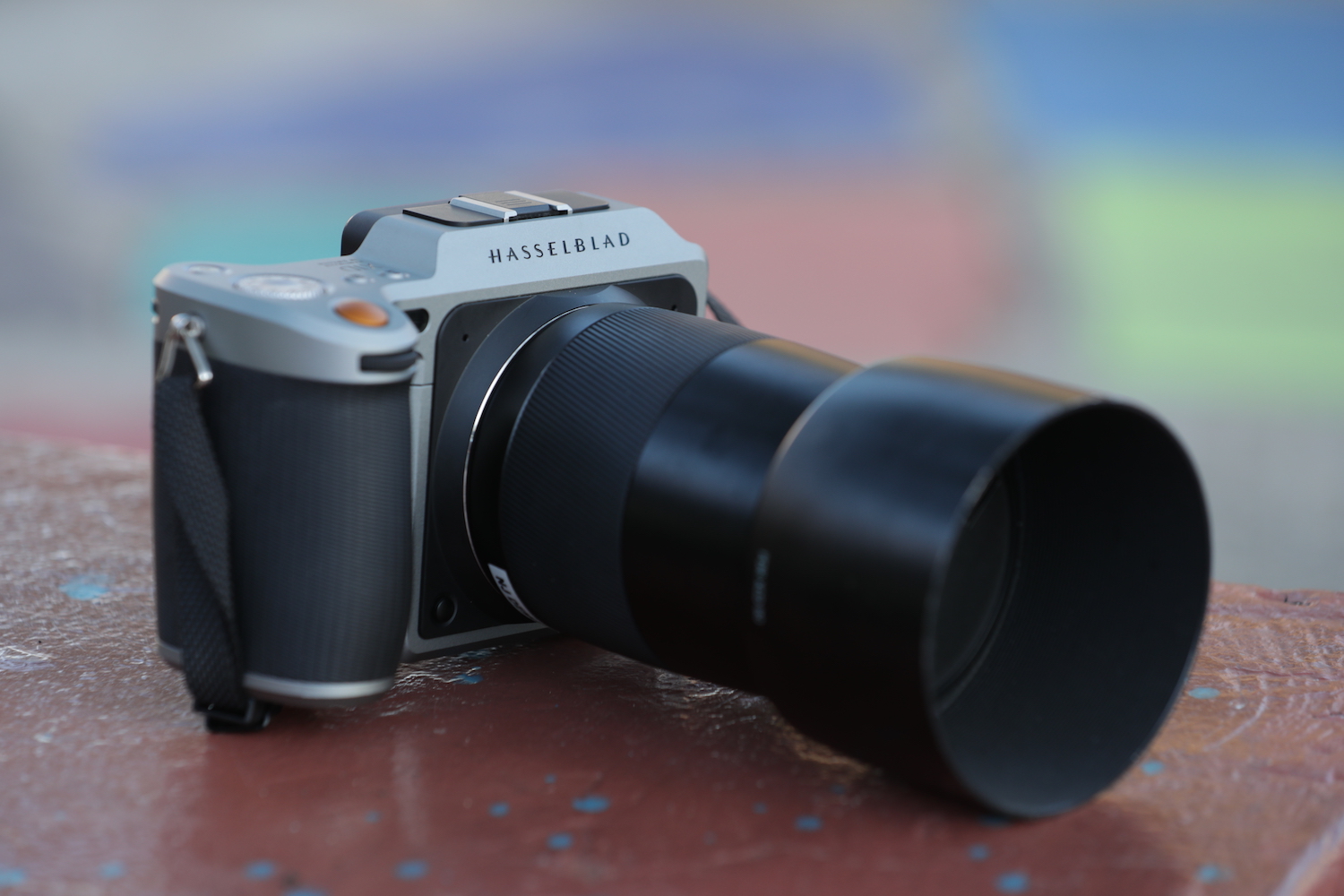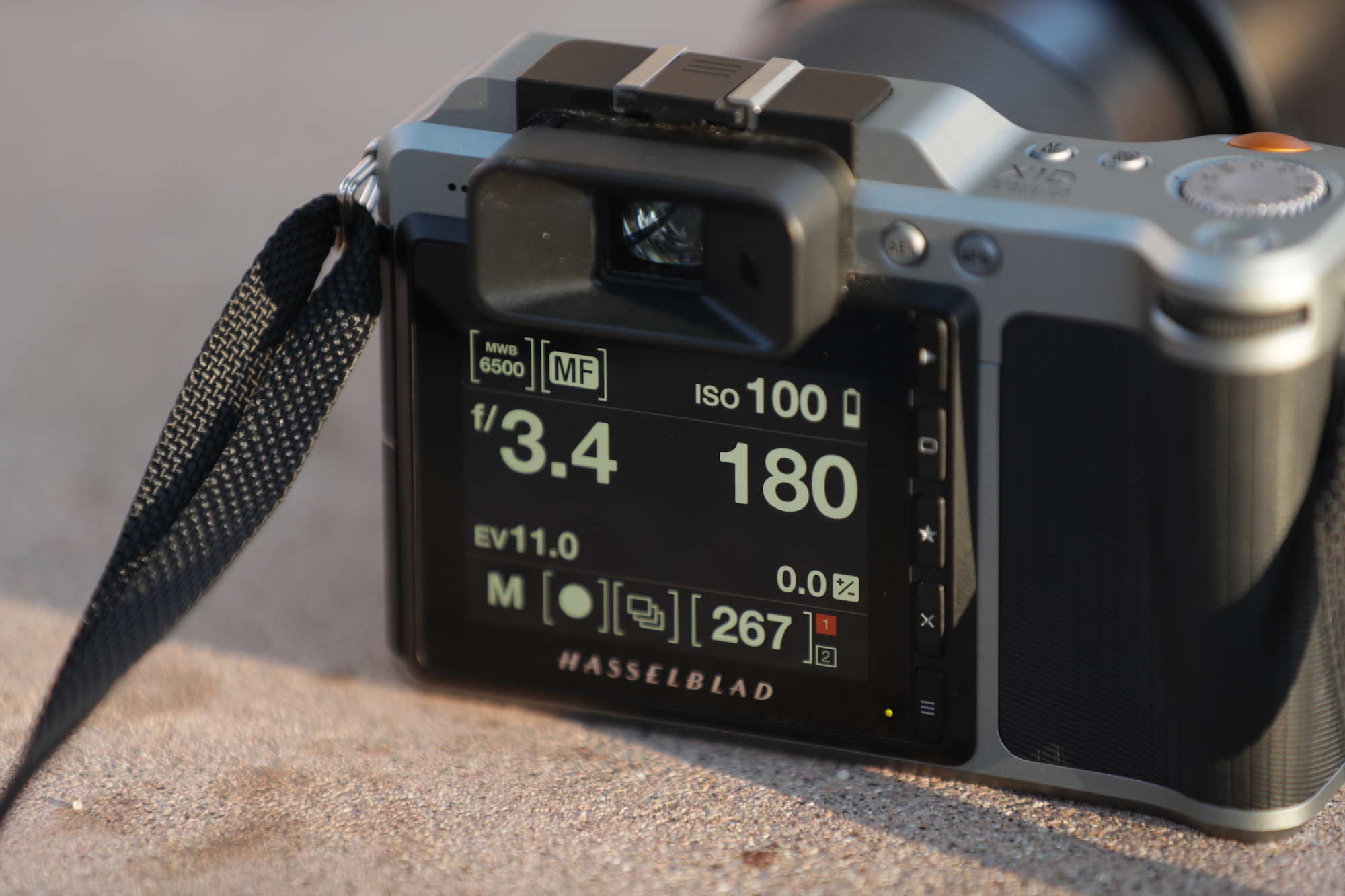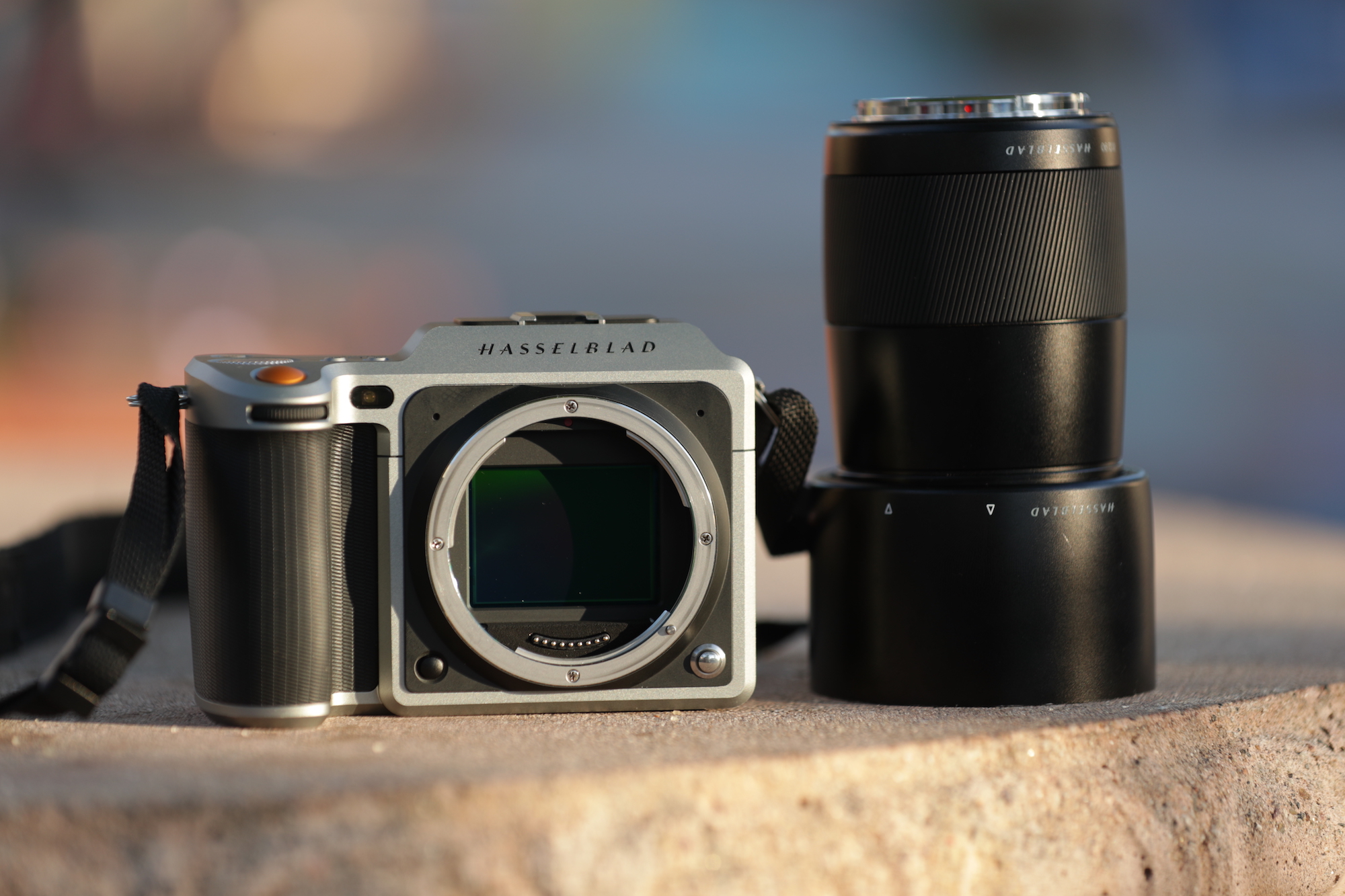When Hasselblad offered me the opportunity to dip my toe into the world of medium format, I jumped at it. For most of my career I’ve been shooting moving images, but the promise of shooting stills with the truly gigantic 50MP 43.8mm x 32.9mm CMOS Sensor of the X1D-50c camera was just too good to pass up. Let’s dive in.

One of the first things you’ll notice about the Hasselblad is that the body is etched with the words: “Handmade in Sweden.” It certainly feels it. I love the robust form factor for photography and this camera is easy to hold — definitely not as heavy as other medium format offerings. The silver and black finish looks great, too — possibly serving to impress some clients along the way. The external button layout is well thought out, although occasionally I found myself accidentally bumping the auto focus button during the course of normal operation.

For me, the camera takes a while to power up (somewhere between 6-8 seconds), but the menu is absurdly easy to navigate. I’m not sure what I was expecting, but coming from the world of Iliad-length Sony and Canon menus, the X1D-50c touchscreen menu was an intuitive breeze to work.The external buttons are well-placed and all the icons make sense at a glance. Camera modes are selected by using the standard wheel we’ve become accustomed to on DSLR bodies, however, and this was a great idea: the wheel can be inset into the camera body to prevent inadvertently changing out of a shooting mode. There was the usual ramp up time, but after about ten minutes, I was off to the races.

Shooting things
Don’t take my word for it — follow THIS link for a Raw X1D-50c image that you can manipulate to your heart’s content (use image of tree).
During a few off hours filming a TV show in summertime Washington, DC, I took the camera out into the humidity to casually put it through its paces. Four things are immediately clear after the first couple clips — 1) 50MP is a ton of detail, 2) The bokeh you get from wide angle medium format images is lovely, 3) this camera is not meant for fast action, 4) this is not necessarily a lowlight camera. Let’s break down those points:
First, the detail — I took a quick image of the ground (see above) and at the time didn’t notice a small fly in the center of the frame. Once I brought the image back into Lightroom and cropped in, I saw the fly and was thrilled to see the image was entirely useable. This is one of the reasons the Hasselblad name is ubiquitous in the fashion world — so much detail comes out in the printed image.
Longtime users of medium format may yawn at this, but getting lovely falloff on a wide angle lens is not something I’m used to seeing on super 35 or even full frame sensors and that falloff looks great with the X1D-50c.
I’m not sure it’s fair to compare medium format cameras to the A7 line of cameras from Sony (a bit like apples to oranges), but I’ve seen what those little A7’s can do and I find myself wanting better and better lowlight performance these days. The X1D-50c tops out at ISO 25,600 (3200 when using the electronic shutter) and the image, at 3200, is just too noisy for me. And there are no ISO increments between 1600 and 3200, so documentary photo work in less than predictable scenarios may be tricky with the Hasselblad. Again, this is coming from my time spent in the DSLR and pro cinema world, so it is quite possible this camera does well in lowlight when compared to its medium format brothers and sisters.
The full camera data sheet is available HERE.
A second feature making documentary photo work tricky is the auto focus performance. I tried sticking to manual focus and had the camera set to magnify whenever I touched the focus wheel (a favorite setting from shooting with my A7SII). With AF engaged I had trouble maintaining critical focus on moving targets. However, I had more luck with the auto focus when working with a model in controlled situations and this is where the camera truly excels.
Shooting people
Back in California, I asked three friends to spend an afternoon with me trying out the camera in a situation it was not really created for and I was blown away. Shooting faces, I found the detail in every single hair and eyelash was beyond gorgeous. For comparison, I brought my Canon 1DX MK II along and while I found myself preferring the colors I got straight out of the Canon on the back camera screen I knew that with just a little tinkering in post I could get the exact same or better results from the Raw X1D-50c file.
Though not a scientific test by any means, the dynamic range out of the X1D-50c also seemed to outperform my Canon from shot to shot.
Below on is a Canon 1DX MK II file with slight post work (converted from the raw format to a jpeg for the web).
Below here is a X1D-50c file cropped with a little post color tinkering (no sharpness post changes, again converted from the raw 3FR file to a jpeg).
And what about video?
Where video is concerned, the camera shoots full HD (1920×1080) in a JPEG Video H.264 compression. Not category leading (in terms of price point) video specs, but having the option of shooting video is always welcome. However, currently the camera only shoots in 25fps PAL and each clip is limited to five minutes in length for some reason.
This camera is not meant for everyone and that’s fine. For me it checks off a ton of boxes in terms of usability and detail within the image and that makes it a great bet for shooting architecture, landscape, fashion, corporate, food and more. Do you have only 5 minutes to catch a moving subject out of your direct control during the dwindling light of sunset? There may be better options out there.
That being said, cameras like the Hasselblad X1D-50c are a great equalizer. They’ve brought medium format closer to the masses and that’s inarguably a good thing for everyone.

